Fontan procedure is a surgery performed in children who are born with a congenital abnormality that leaves them with only one functioning ventricle. This could be due to the absence of a heart valve or an abnormality in the ability of the ventricles to pump blood. As a result, only a single ventricle has to do simultaneous work of supplying the blood to the lungs as well as the rest of the body. The main aim of Fontan procedure is to improve the Fontan circulation so that the single ventricle is able to pump the blood effectively to the entire body and the impure blood to the lungs without any pumping mechanism in place.
Singapore is highly specialized in providing advanced medical facilities and care. Singapore has rapidly evolved in the technology of medical equipment and its patient-friendly facilities such as translators and local transport. Due to strong back-up provided to the healthcare sector by the government, Singapore has become one of the most important medical destinations in the world. Fontan procedure is a surgery that is performed smoothly in hospitals throughout Singapore. Many patients of with Hypoplastic Left Heart Syndrome travel to Singapore to undergo Fontan treatment.
The cost of the Fontan procedure involves the surgery fee, the cost of any adjunctive treatments. The cost also depends on the type of medications given, and the length of the treatment. There are several hospitals in Singapore that carry out the Fontan procedure. The cost of the procedure may vary among different hospitals, but the difference is not much. The total cost package for the Fontan procedure in Singapore might also include additional costs such as boarding, lodging, and food.
Treatment cost
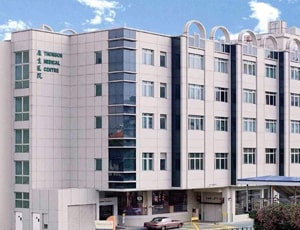
Apart from in-detail treatment procedures available, Thomson Medical Centre located in Thomson Road, Singapore has a wide variety of facilities available for International Patients. Some of the facilities which are provided by them are Accommodation, Airport Transfer, Choice of Meals, Interpreter, SIM, TV inside room. Also listed below are some of the most prominent infrastructural details:

Mount Elizabeth Novena Hospital located in Novena, Singapore is accredited by JCI. Also listed below are some of the most prominent infrastructural details:
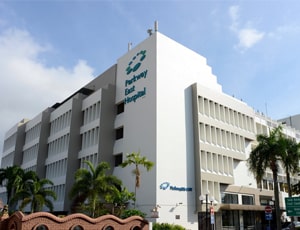
Parkway East Hospital located in Joo Chiat Pl, Singapore is accredited by JCI. Also listed below are some of the most prominent infrastructural details:

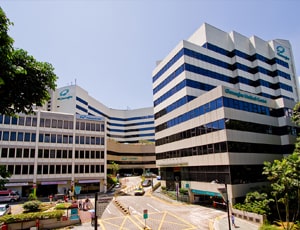
Gleneagles Hospital located in Napier Road, Singapore is accredited by JCI. Also listed below are some of the most prominent infrastructural details:

Mount Elizabeth Hospital located in Singapore, Singapore is accredited by JCI. Also listed below are some of the most prominent infrastructural details:
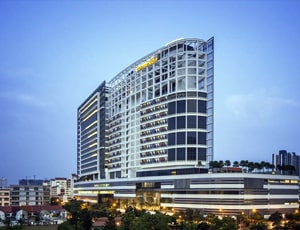
Apart from in-detail treatment procedures available, Farrer Park Hospital located in Connexion, Singapore has a wide variety of facilities available for International Patients. Some of the facilities which are provided by them are Accommodation, Airport Transfer, Choice of Meals, Interpreter, SIM, TV inside room. Also listed below are some of the most prominent infrastructural details:

Types of Fontan Procedure in Apollo Hospitals Bannerghatta and its associated cost
| Treatment Option | Approximate Cost Range (USD) | Approximate Cost Range (INR) |
|---|---|---|
| Fontan Procedure (Overall) | 8588 - 11021 | 681130 - 907962 |
| Bidirectional Glenn Procedure (Stage II Fontan) | 8583 - 11972 | 729640 - 974236 |
| Hemi-Fontan Procedure (Hemi-Fontan or Completion Fontan) | 8372 - 11009 | 686686 - 908543 |
| Modified Fontan Procedures | 8470 - 11258 | 720487 - 953633 |
DOCTORS IN 13 SPECIALITIES
FACILITIES & AMENITIES
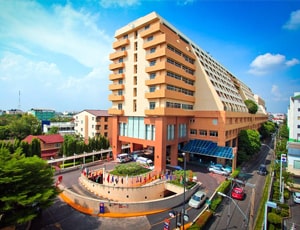
Types of Fontan Procedure in Vejthani Hospital and its associated cost
| Treatment Option | Approximate Cost Range (USD) | Approximate Cost Range (THB) |
|---|---|---|
| Fontan Procedure (Overall) | 12304 - 15905 | 447146 - 569202 |
| Bidirectional Glenn Procedure (Stage II Fontan) | 12801 - 16517 | 458757 - 590346 |
| Hemi-Fontan Procedure (Hemi-Fontan or Completion Fontan) | 12803 - 15670 | 453779 - 568592 |
| Modified Fontan Procedures | 12706 - 16044 | 446248 - 562317 |

Types of Fontan Procedure in Zulekha Hospital Dubai and its associated cost
| Treatment Option | Approximate Cost Range (USD) | Approximate Cost Range (AED) |
|---|---|---|
| Fontan Procedure (Overall) | 15580 - 19243 | 57858 - 71464 |
| Bidirectional Glenn Procedure (Stage II Fontan) | 16392 - 19821 | 59826 - 73296 |
| Hemi-Fontan Procedure (Hemi-Fontan or Completion Fontan) | 16081 - 19166 | 58753 - 70763 |
| Modified Fontan Procedures | 16154 - 18780 | 58070 - 70851 |
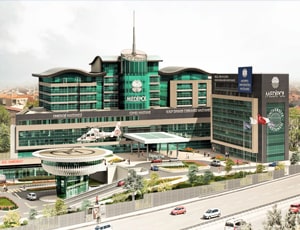
Types of Fontan Procedure in Medipol Mega University Hospital and its associated cost
| Treatment Option | Approximate Cost Range (USD) | Approximate Cost Range (TRY) |
|---|---|---|
| Fontan Procedure (Overall) | 13375 - 16638 | 405305 - 519870 |
| Bidirectional Glenn Procedure (Stage II Fontan) | 14139 - 17192 | 430738 - 527341 |
| Hemi-Fontan Procedure (Hemi-Fontan or Completion Fontan) | 13648 - 16604 | 415525 - 514657 |
| Modified Fontan Procedures | 13821 - 16757 | 416946 - 509938 |

Types of Fontan Procedure in Zulekha Hospital Sharjah and its associated cost
| Treatment Option | Approximate Cost Range (USD) | Approximate Cost Range (AED) |
|---|---|---|
| Fontan Procedure (Overall) | 15796 - 19550 | 56860 - 69045 |
| Bidirectional Glenn Procedure (Stage II Fontan) | 16452 - 19304 | 60438 - 72009 |
| Hemi-Fontan Procedure (Hemi-Fontan or Completion Fontan) | 16280 - 19447 | 58530 - 69129 |
| Modified Fontan Procedures | 16406 - 18486 | 59633 - 70671 |
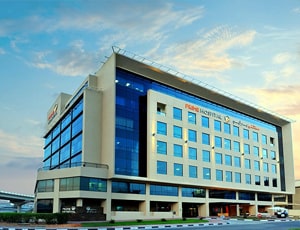
Types of Fontan Procedure in Prime Hospital and its associated cost
| Treatment Option | Approximate Cost Range (USD) | Approximate Cost Range (AED) |
|---|---|---|
| Fontan Procedure (Overall) | 15698 - 19130 | 58324 - 70499 |
| Bidirectional Glenn Procedure (Stage II Fontan) | 16423 - 19880 | 59167 - 71425 |
| Hemi-Fontan Procedure (Hemi-Fontan or Completion Fontan) | 16198 - 19148 | 57730 - 70310 |
| Modified Fontan Procedures | 15921 - 18765 | 59691 - 68482 |
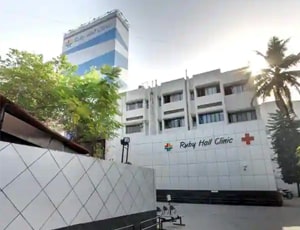
Types of Fontan Procedure in Ruby Hall Clinic and its associated cost
| Treatment Option | Approximate Cost Range (USD) | Approximate Cost Range (INR) |
|---|---|---|
| Fontan Procedure (Overall) | 7018 - 9349 | 572074 - 757731 |
| Bidirectional Glenn Procedure (Stage II Fontan) | 7279 - 9831 | 605378 - 812888 |
| Hemi-Fontan Procedure (Hemi-Fontan or Completion Fontan) | 7154 - 9359 | 587629 - 764750 |
| Modified Fontan Procedures | 7309 - 9476 | 583882 - 772183 |

Assuta Hospital located in Tel-Aviv, Israel is accredited by JCI. Also listed below are some of the most prominent infrastructural details:
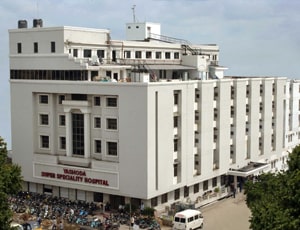
Types of Fontan Procedure in Yashoda Hospital, Malakpet and its associated cost
| Treatment Option | Approximate Cost Range (USD) | Approximate Cost Range (INR) |
|---|---|---|
| Fontan Procedure (Overall) | 7596 - 10170 | 623314 - 830099 |
| Bidirectional Glenn Procedure (Stage II Fontan) | 7935 - 10694 | 647817 - 875932 |
| Hemi-Fontan Procedure (Hemi-Fontan or Completion Fontan) | 7699 - 10179 | 630996 - 832041 |
| Modified Fontan Procedures | 7824 - 10323 | 640620 - 845945 |
Fontan procedure is a surgery for individuals born with only one functioning heart ventricle. Following the surgery, the pulmonary artery is the only blood vessel that receives oxygen-poor blood from the body, bypassing the heart chambers. Most patients live for 30 years or more following the surgery.
Children aged 2 to 15 (generally between 3 and 5) with a single ventricle condition may need a Fontan procedure. However, it’s not suitable for everyone. A healthcare provider will determine if your child is a good candidate by ensuring their working ventricle is strong enough to pump effectively and their lungs are healthy enough to handle passive blood flow.
Following are the different types of Fonton Procedures:
On the day of surgery, your child will be given anesthesia to be sure that they sleep deeply and pain-free. In the operating room, the surgeon will link your child to a machine that temporarily takes over the functions of the heart and lungs. Afterward, the surgeon will connect the inferior vena cava to the pulmonary artery, redirecting oxygen-poor blood from the lower body to the lungs.
Occasionally, the surgeon may perform additional heart treatments, such as enlarging the gap between the atria or repairing a heart valve. Depending on your child's heart and lung condition, a small opening may also be created in the tube connecting the inferior vena cava to the pulmonary artery.
Post-surgery, the Patient is transferred to the recovery room for vital sign monitoring for a few hours before being moved to the cardiac ward once stable. Painkillers may be administered, and a hospital stay typically lasts a few days with restricted eating and drinking initially. Bowel movements must normalize before transitioning to a light diet and fluids, usually taking two to three days. Medications and fluids are administered via IV until the normal diet resumes. Dressings are changed daily, and most patients can resume normal activities within three months, gradually increasing activity levels without overexertion.
Ask your healthcare adviser for the best multiple options and choose the one that meets your expectations
Fontan Procedure package cost in Singapore has different inclusions and exclusions. There are many hospital that cover the cost of pre-surgical investigations of the patient in the treatment package. The Fontan Procedure cost in Singapore includes the cost of anesthesia, medicines, hospitalization and the surgeon's fee. There are many things that may increase the cost of Fontan Procedure in Singapore, including prolonged hospital stay and complications after the procedure.
Many hospitals in Singapore perform Fontan Procedure. Some of the best hospitals for Fontan Procedure in Singapore include the following:
After Fontan Procedure in Singapore, the patient is supposed to stay in guest house for another 30 days. This period is important to conduct all the follow-up tests to ensure that the surgery was successful and the patient can go back to the home country.
There are certain expenses additional to the Fontan Procedure cost that the patient may have to pay for. These are the chanrges for daily meals and hotel stay outside the hospital. The per day extra expenses in Singapore per person are about USD 50 per person.
Some of the cpopular cities in Singapore that offer Fontan Procedure include the following:
The patient has to spend about 7 days in the hospital after Fontan Procedure for proper recovery and to get clearance for discharge. This phase is important to ensure that the patient is recovering well and is clinically stable. During this time, several tests are performed before the patient is deemed suitable for discharge.
The average rating for Fontan Procedure hospitals in Singapore is 2.7. This rating is automatically calculated on the basis of several parameters such as the infrastructure of the hospital, quality of services, nursing support and other services.
There are more than 6 hospitals that offer Fontan Procedure in Singapore. The above listed clinics are approved to perform the surgery and have proper infrastructure to handle Fontan Procedure patients. Also, these hospitals follow the necessary guidelines as required by the medical associations for the treatment of Fontan Procedure patients.
Some of the most sought after doctors for Fontan Procedure in Singapore are: